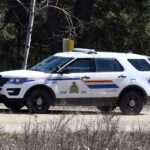Home »

Audits aimed to reduce human-wildlife conflicts
To reduce human-wildlife conflicts, the B.C. Conservation Officer Service (COS) recently conducted province-wide bear attractant audits that resulted in 732 enforcement actions, including 108 in the Kootenays.
During the audits, conservation officers patrolled neighbourhoods and other areas to ensure attractants were properly secured by using bear-proof bins, excess fruit had been picked from trees and electric fencing was used around livestock.
The audits resulted in:
* 704 inspections throughout the province;
* 76 charges;
* 301 warnings; and
* 355 Dangerous Wildlife Protection Orders, which direct a property owner to remove an attractant or face a $575 fine.
The audits began in summer 2019 and ramped up in September and October when bears forage for food to prepare for winter. The first phase focused on residential, recreational and commercial areas, particularly those with a history of bear conflicts. Conservation officers also focused on communities where unsecured attractants, such as garbage, pet food, birdseed and compost, had led to issues with bears.
Hundreds of hours were spent educating the public about the importance of managing attractants, which is the best way to prevent wildlife conflicts. The second phase of attractant audits will take place in the spring when bears wake up and search for food.
Every year, too many bears and other wildlife are destroyed because their natural behaviour has been altered due to easy access to non-natural food sources like garbage. Habituated bears lose their fear of people and gain appetites for non-natural food, putting both themselves and communities at risk.
Relocated wildlife often fail to adapt to their new habitat. As a result, they make long-distance movements, starve, or return to their original area or another community in search of easy food. The ministry and COS are determined to significantly reduce the role of attractants through both education and, where necessary, strengthened enforcement measures.
“Human-wildlife conflict is a serious issue in British Columbia. The most effective way to keep the public safe, and protect and conserve wildlife, is to prevent conflicts from happening in the first place. That’s why people need to be diligent when it comes to managing attractants in and around their homes and communities. Not a single conservation officer relishes the thought of having to put down an animal, which is always a last resort for public safety. We will continue our community awareness campaigns and our enforcement measures where necessary,” said George Heyman, Minister of Environment and Climate Change Strategy.
“Public safety is paramount. The conservation officer service cannot stress enough that the best way to keep people safe and bears from being destroyed is to secure attractants around your home, business or campsite. The conservation officer service hopes that through these attractant audits, the public will recognize that more needs to be done to ensure everyone does their part to help keep wildlife wild. Thank you to everyone who has taken the time to ensure their attractants are properly managed,” said Doug Forsdick, chief conservation officer, B.C. Conservation Officer Service.
Every year, the COS receives more than 25,000 reports of human-wildlife conflicts. Many of the calls are related to bears and unsecured attractants.
Conservation officers routinely work with partner agencies, such as WildSafeBC and Indigenous enforcement officers, to provide public outreach and ensure attractants are properly managed.
The Bear Smart Community Program encourages communities to achieve “Bear Smart” status by following a series of set criteria aimed at reducing human-bear conflicts. Eight communities in B.C. have attained the status.
Fines related to attractant legislation can range from $230 to $575.
Regional breakdown of bear attractant audit
Region: Kootenays
Inspections: 159
Enforcement actions: 108
Region: Okanagan
Inspections: 49
Enforcement actions: 133
Region: Omineca
Inspections: 66
Enforcement actions: 50
Region: Peace
Inspections: 51
Enforcement actions: 57
Region: Skeena
Inspections: 78
Enforcement actions: 54
Region: South Coast
Inspections: 79
Enforcement actions: 202
Region: Thompson-Cariboo
Inspections: 146
Enforcement actions: 33
Region: West Coast
Inspections: 76
Enforcement actions: 95
Lead image: Grizzly cubs play with a beer can discarded roadside. e-KNOW file photo
e-KNOW







